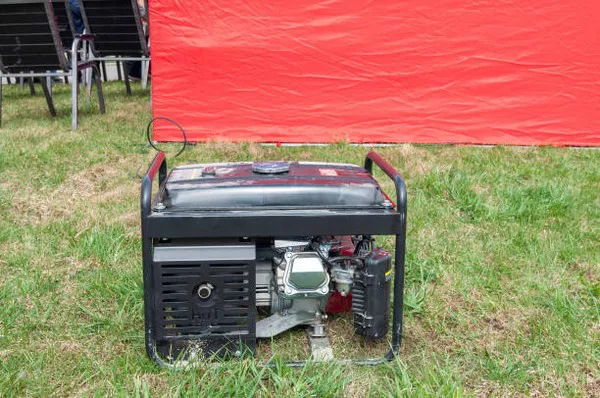When it comes to ensuring the comfort and safety of your home, having a reliable source of power is crucial, especially during unexpected power outages. Heat pumps have become a popular choice for heating and cooling homes efficiently. However, during power outages, your heat pump’s functionality can be compromised without a backup power source. To keep your home comfortable, you need a generator that can support your heat pump’s power requirements. In this article, we will explore how to determine the right generator size to run your heat pump effectively.
Understanding Heat Pumps
Before delving into the specifics of generator sizing, it’s essential to understand how heat pumps work and their power requirements. Heat pumps are energy-efficient systems that can both heat and cool your home. They operate by transferring heat from one location to another, typically from the outside to the inside during heating mode and vice versa during cooling mode.
Heat pumps come in various sizes and capacities, but the power they require depends on factors such as the unit’s size, efficiency, and the climate in which it operates. In most cases, heat pumps operate on electrical power, making them vulnerable during power outages.
Generator Sizing Basics
The process of determining the right generator size for your heat pump involves several important steps. These steps ensure that your generator can provide enough power to keep your heat pump running smoothly when the grid goes down. Let’s break down these steps:
Identify the Heat Pump’s Power Requirements:
The first step is to find out the power requirements of your heat pump. You can typically find this information on the unit’s nameplate or in the manufacturer’s documentation. Look for the heat pump’s rated voltage (usually 120V or 240V) and the rated amperage (in amps).
Calculate the Starting and Running Watts:
Heat pumps have two power requirements: starting watts and running watts. The starting watts (also known as surge watts) represent the initial power surge required to start the heat pump’s compressor, fan motors, and other components. Running watts, on the other hand, represent the continuous power needed to keep the heat pump operating once it has started.
Determine Additional Electrical Loads:
Consider other electrical loads in your home that may need to be powered during an outage, such as lights, refrigerators, or essential appliances. Sum up the running watts of these devices to get the total load.
Calculate Total Generator Capacity:
Add the starting watts of the heat pump and the running watts of all other essential loads to find the total generator capacity required to run your home during a power outage.
Generator Size Selection
Now that you have a clear understanding of the power requirements for your heat pump and other essential loads, it’s time to select the right generator size. Generators are rated in terms of their capacity, typically measured in watts (W) or kilowatts (kW). To ensure your generator can handle the load, follow these guidelines:
Oversizing for Safety:
It’s generally recommended to choose a generator with a capacity that exceeds your calculated total load. This provides a margin of safety and ensures that the generator won’t be operating at its maximum capacity, which can reduce wear and tear and extend its lifespan.
Consider Future Expansion:
If you plan to add more appliances or electrical loads in the future, it’s wise to select a generator with additional capacity to accommodate these changes without the need for a generator upgrade.
Portable vs. Standby Generators:
Depending on your budget and specific needs, you can choose between portable and standby generators. Portable generators are cost-effective and versatile but require manual setup and fueling. Standby generators, on the other hand, provide automatic backup power and are permanently installed.
Seek Professional Guidance:
For accurate generator sizing, it’s advisable to consult with a licensed electrician or generator installer. They can help you select the right generator size based on your heat pump’s requirements and your specific circumstances.
Case Study: Sizing a Generator for a Heat Pump
Let’s consider a practical example to illustrate the generator sizing process. Suppose you have a heat pump with the following specifications:
- Rated Voltage: 240V
- Rated Amperage: 20A
- Starting Watts: 4,800W
- Running Watts: 2,400W
Additionally, you have essential loads totaling 1,200W, including lights, a refrigerator, and a few small appliances.
To calculate the total load during a power outage:
Starting Watts for the heat pump: 4,800W
Running Watts for essential loads: 1,200W
Total Generator Capacity = 4,800W (heat pump) + 1,200W (essential loads) = 6,000W
In this case, you would need a generator with a capacity of at least 6,000 watts (or 6 kW) to power your heat pump and essential loads during a power outage. To provide a safety margin, you might opt for an 8 kW or 10 kW generator.
Conclusion
Ensuring that your heat pump continues to operate during a power outage is vital for maintaining the comfort and functionality of your home. Properly sizing your generator is essential to meet the power demands of your heat pump and other essential loads. By following the steps outlined in this guide and seeking professional advice when needed, you can select the right generator size to keep your home comfortable and secure during power interruptions. Remember that investing in the right generator size is an investment in your family’s comfort and safety.

